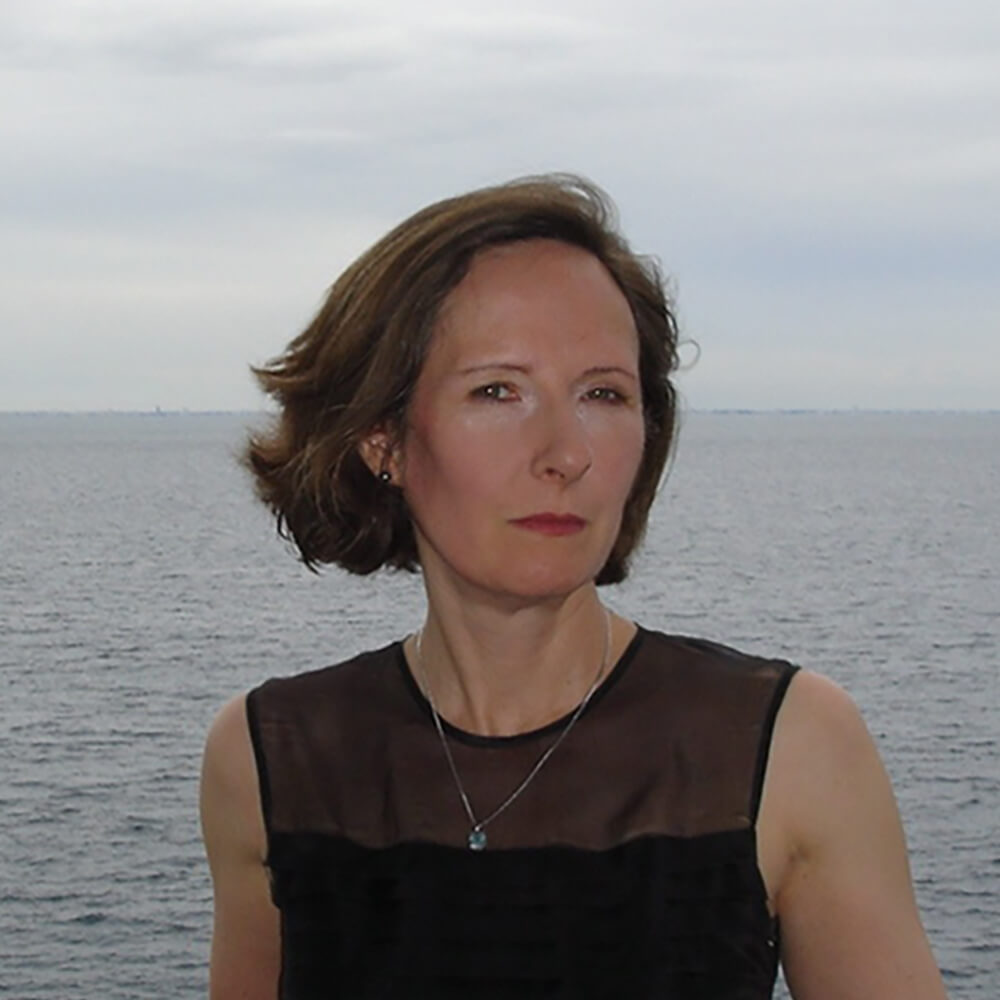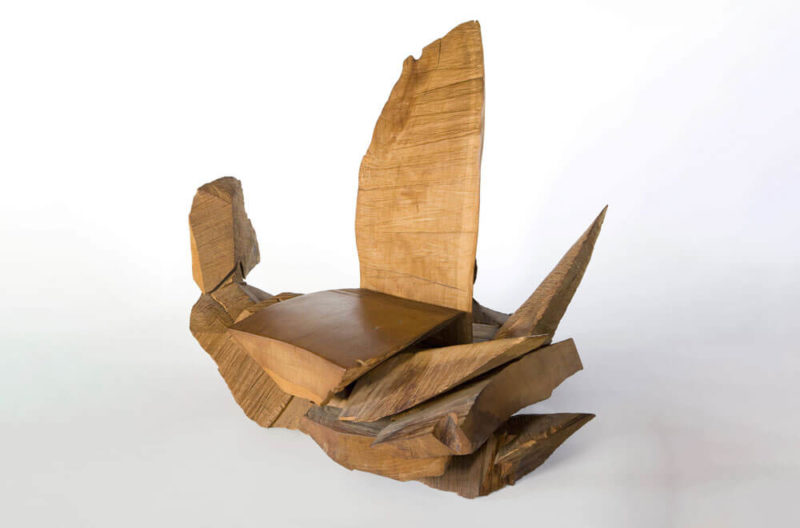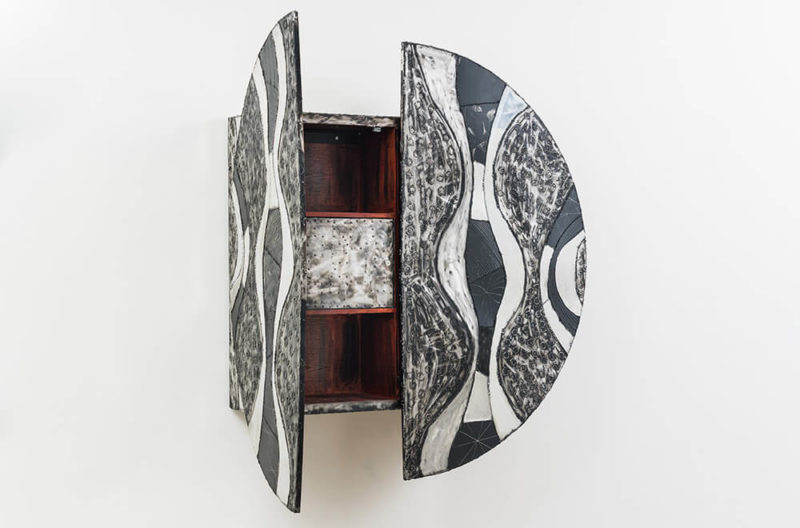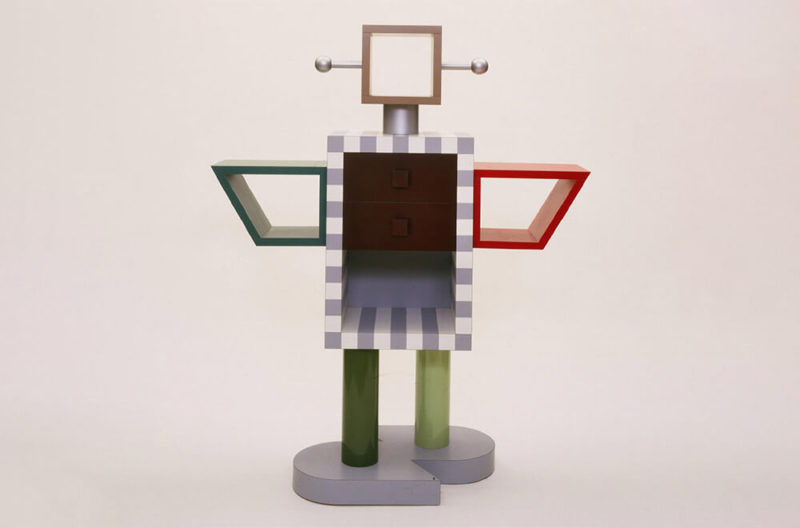Rediscovering Paul Hultberg
The designer at the beating heart of the avant-garde who expressed himself through enamel.
Moderne Gallery, Philadephia
18th June – 24th September 2021
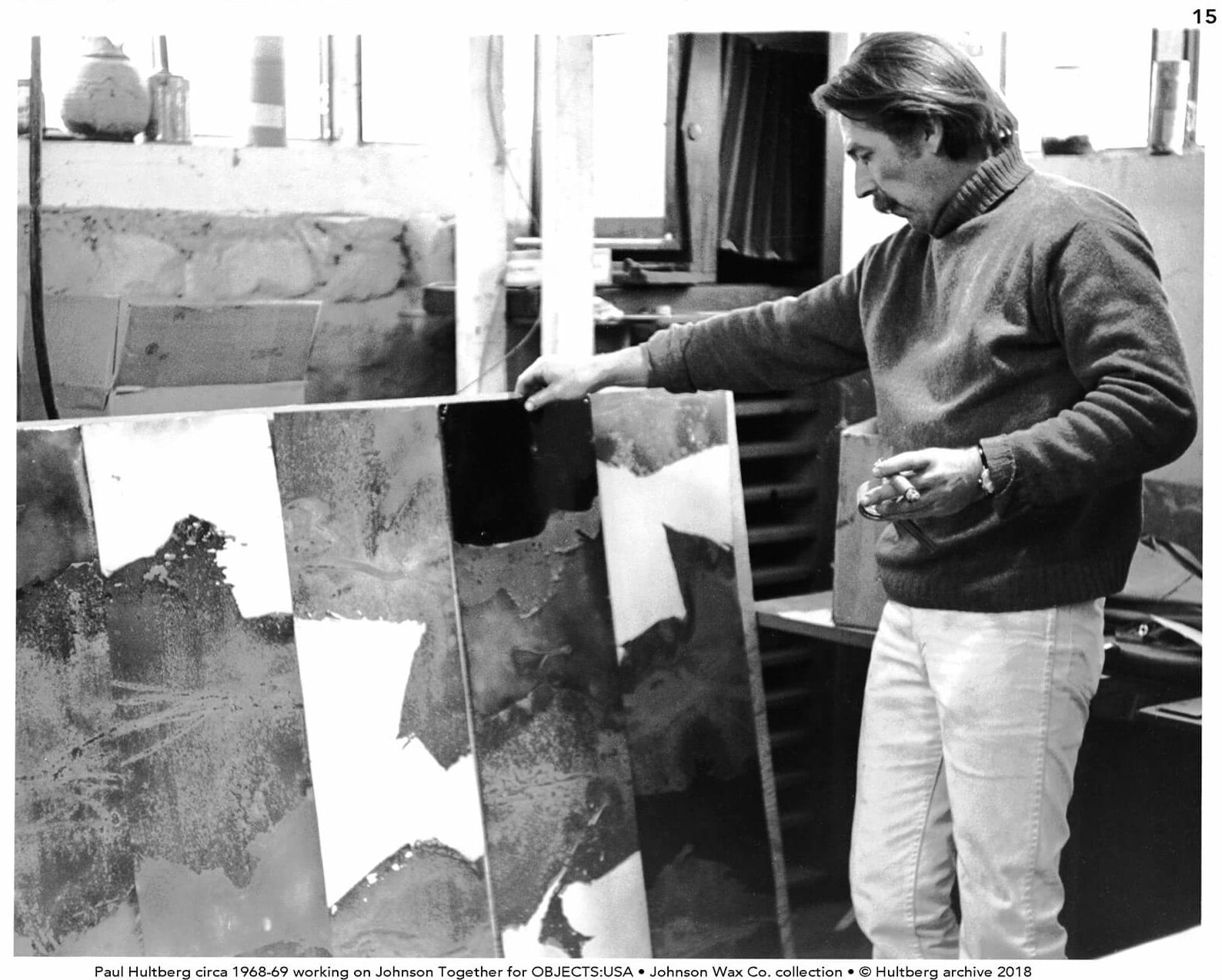
Paul Hultberg in his studio, 1968-9
COURTESY: Moderne Gallery
“PICK UP A sheet of copper and you’ll reflect the environment; you’ll get ideas for shapes,” says the artist-enamellist Paul Hultberg (1926-2019) in a short film about his practice made in 1966. Flex the metal, and those images “distort and change, picking up what’s around you.”
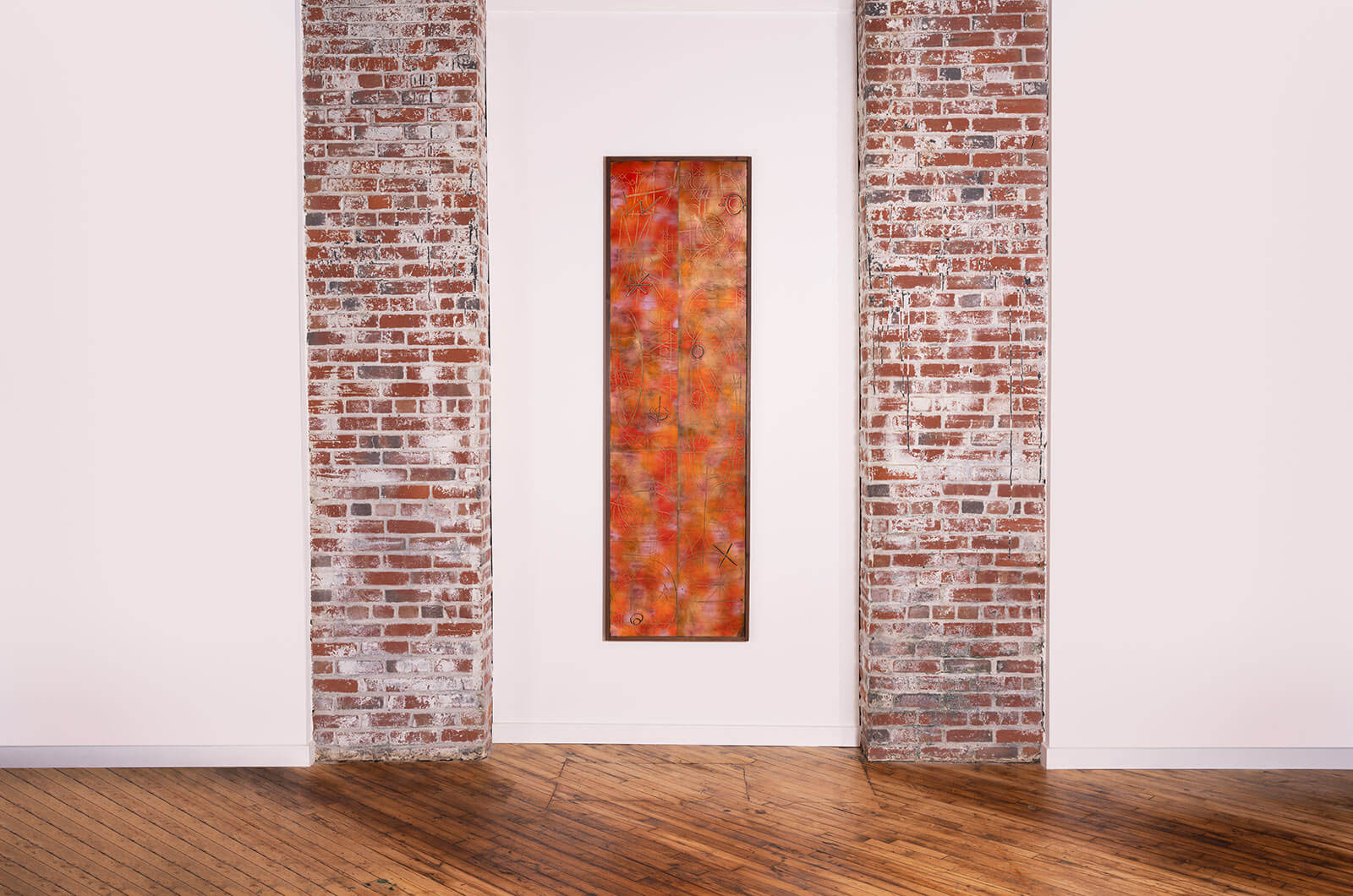
Paul Hultberg, ‘Hieroglyph’, 1958
COURTESY: Moderne Gallery / PHOTOGRAPH: Christian Giannelli
Hultberg’s enamelled panels, the stellar works in a large-scale survey of his work at Philadelphia’s Moderne Gallery this summer, are abstractions of the world around him. He wasn’t “trying to imitate nature”, but he was “using processes” found therein. If enamel powder, essentially pulverised glass, was akin to sand, his method was a matter of “continually modifying [its] appearance with water, with wind, with erosion, with temperature” – like weather on a beach.
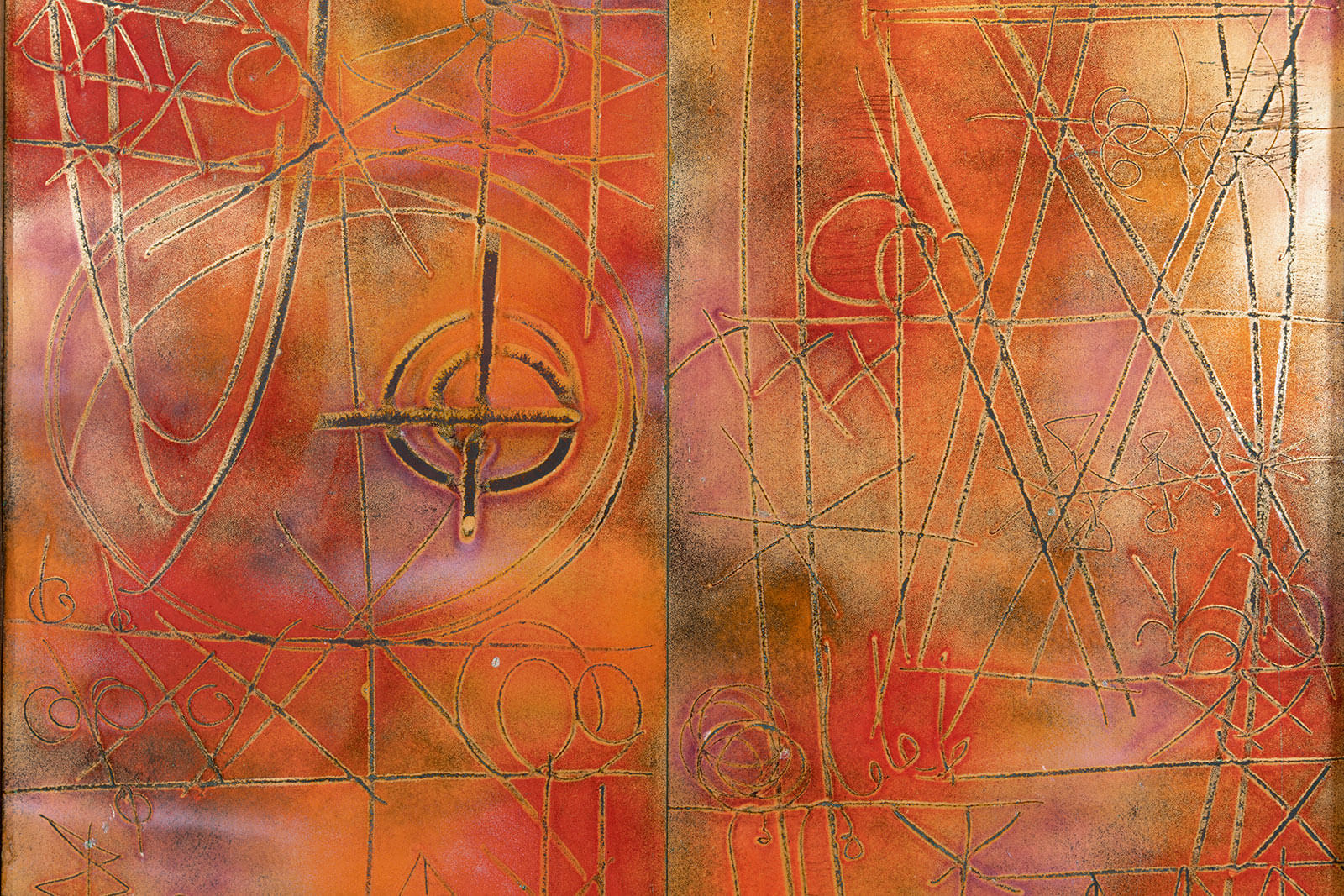
Paul Hultberg, ‘Hieroglyph’, 1958 (detail)
COURTESY: Moderne Gallery / PHOTOGRAPH: Christian Giannelli
Only once there was nothing further to do did he fire the copper (he also worked on steel and aluminium) on a kind of gas grill he designed, waiting till the temperature reached 1500°F (815°C), at which point the enamel fuses with the metal, any organic matter in the powder “burns out”, areas left bare oxidise “and the thing [takes on] a life completely of its own”.
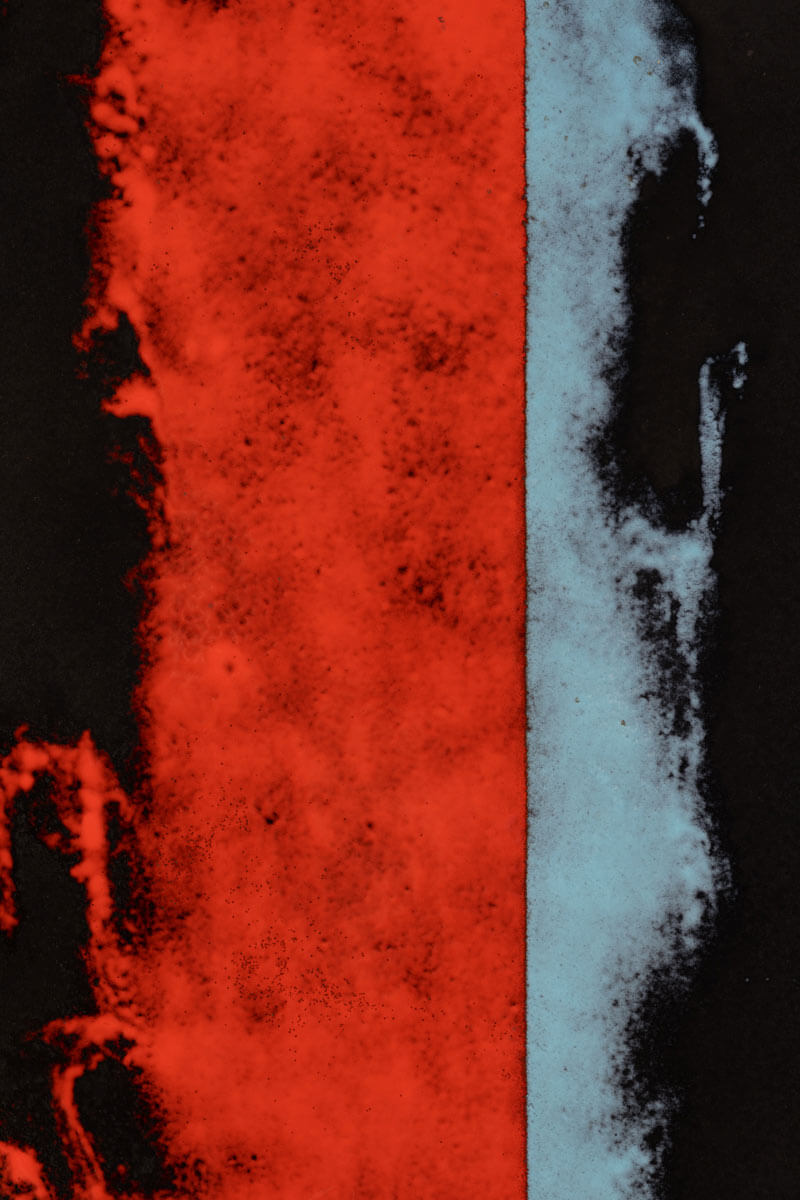
Paul Hultberg, ‘Untitled 10’, circa 1960
COURTESY: Moderne Gallery and Lawrence Hultberg
“Each panel needed to be something that ‘I want to see later, I get a certain feeling from, I want to be near’
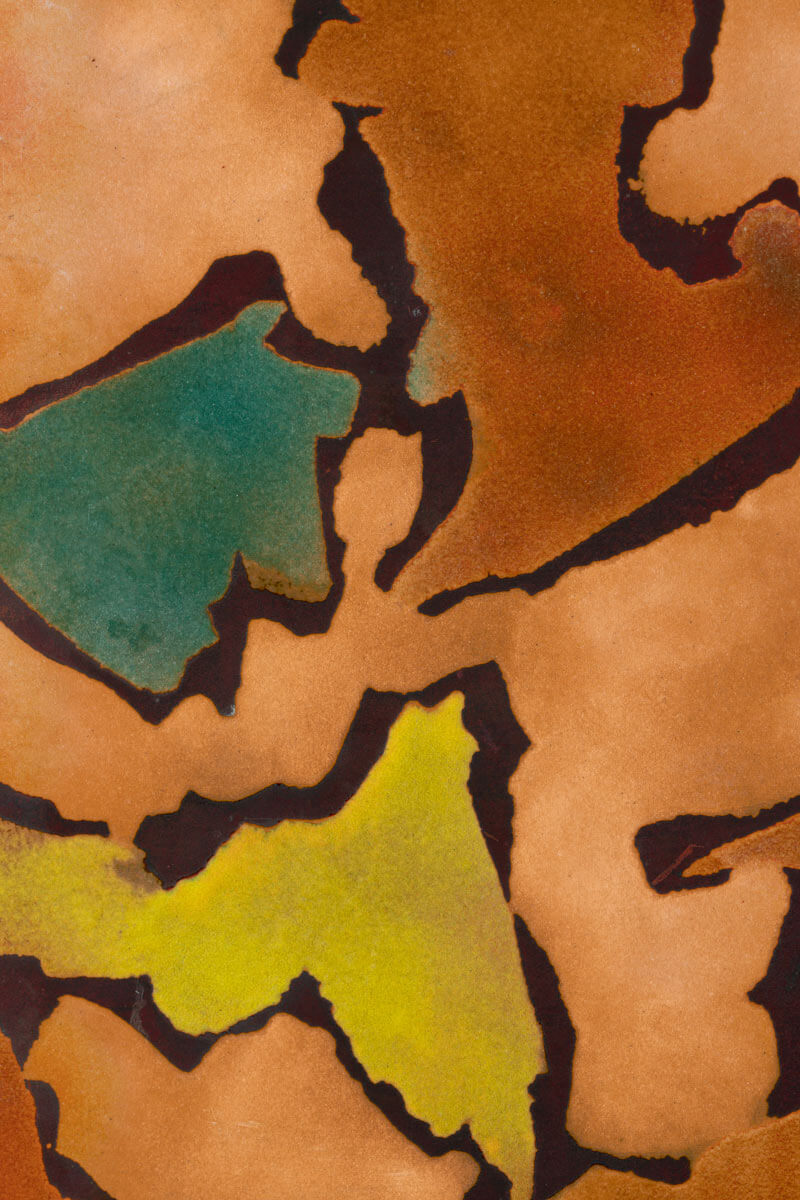
Paul Hultberg, ‘Untitled 35’, circa 1960s
COURTESY: Moderne Gallery and Lawrence Hultberg
“‘If it doesn’t do that, I throw it away’”
Hultberg tends to be described as an Abstract Expressionist. (Certainly, some of his later large-format enamels are redolent of paintings by Clyfford Still.) Like his near contemporaries Jackson Pollock and Philip Guston, he spent his youth in California and after art school did as they had done and went to Mexico City to study mural painting. Here, he not only encountered José Clemente Orozco and David Alfaro Siqueiros (whom Guston had assisted and who introduced Pollock to the potential inherent in liquid paint), but was taught by the muralist José Gutiérrez, with whom he experimented with durable synthetic resins and emulsions for outdoor use.
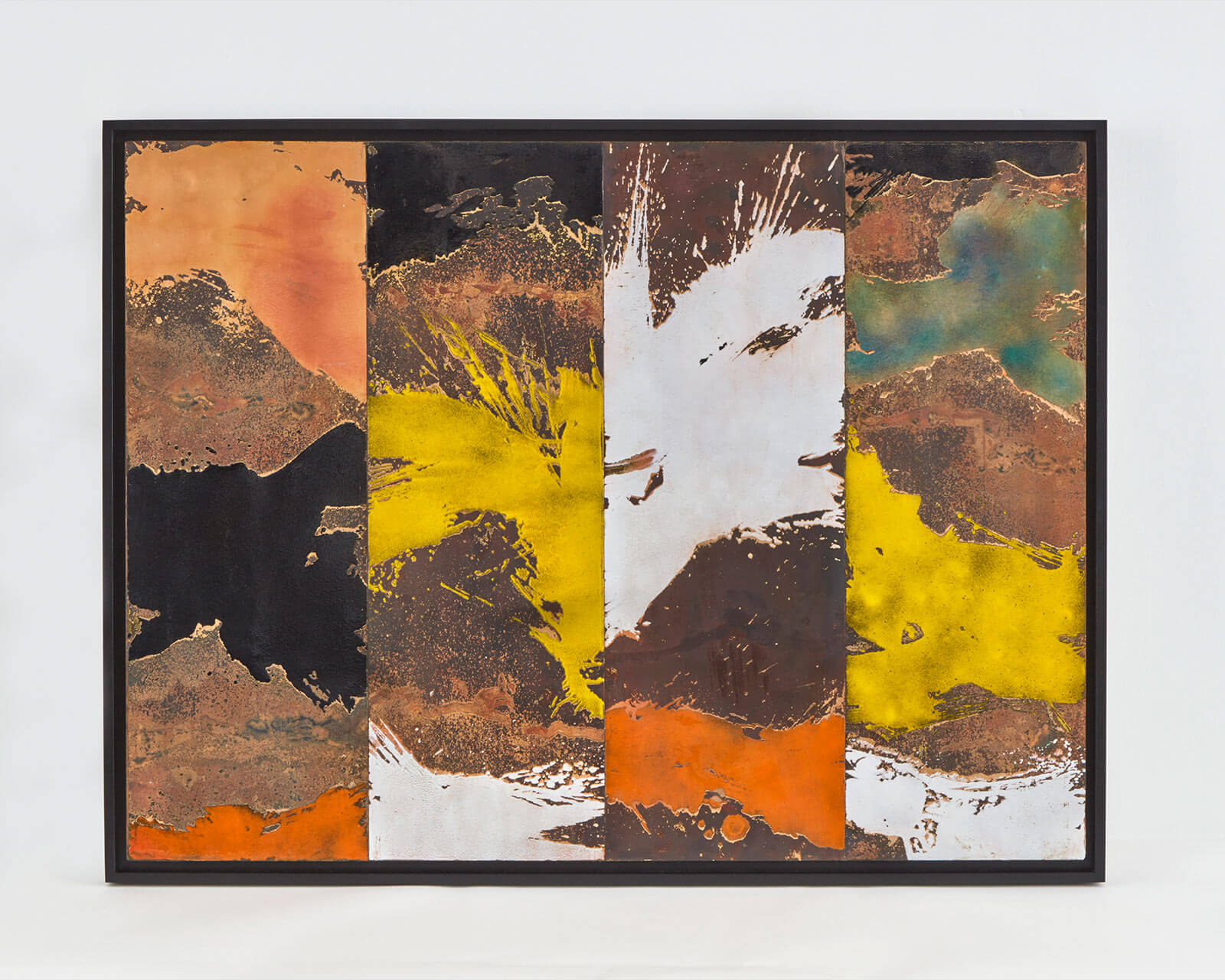
Paul Hultberg, ‘Little Johnson’, 1969
COURTESY: Moderne Gallery
Back in the US, in 1951 he enrolled at the Brooklyn Museum Art School, where he subsequently taught. A year later, MoMA bought some of his prints. And by 1956, he and his wife, Ethel, were living at Gate Hill Cooperative, an artist’s colony in Stony Point, NY. John Chamberlain used to babysit their children, and their circle included Robert Rauschenberg, Merce Cunningham and John Cage, whose thinking about indeterminacy and chance surely informed Hultberg’s interest in the unpredictability of enamel as a medium.
Hultberg was not unsuccessful. His enamels were exhibited at two World Fairs, notably in the Pavilion of American Interiors in New York in 1964. Two years later, he had a solo show at the Museum of Contemporary Crafts (now the Museum of Arts and Design). Meanwhile he was producing doors and panels for private residences, public buildings and corporate headquarters, notably the huge murals, respectively 45ft and 60ft wide, he made for the Pan Am and Metro Media Buildings in New York.
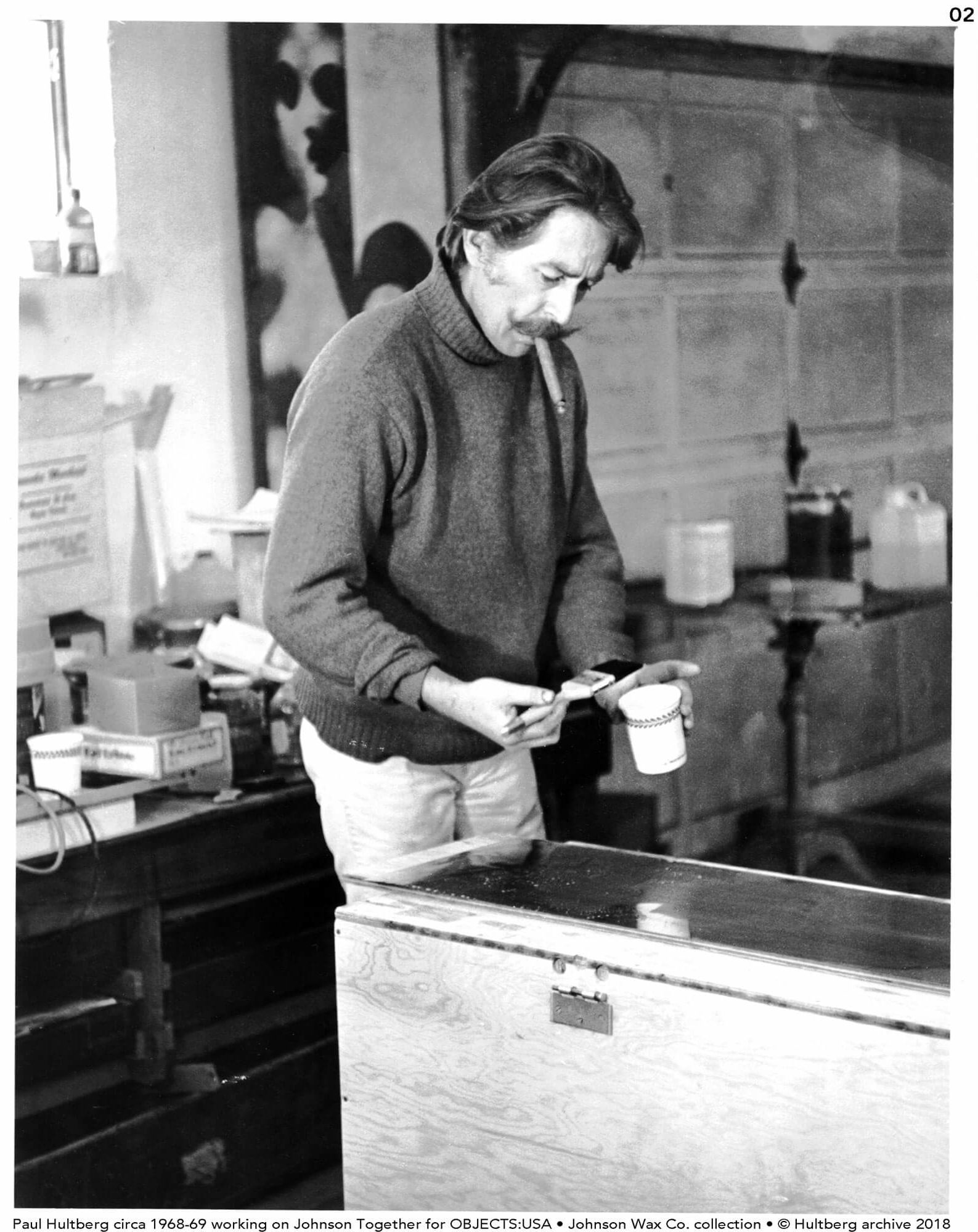
Paul Hultberg in his studio, 1968-9
COURTESY: Moderne Gallery
In light of their quality – and that of the small-scale works he made too – not to mention what the curator Glenn Adamson, a former director of the Museum of Arts and Design, calls “the privileged position he had at the beating heart of the American avant-garde”, the mystery is that he has been largely forgotten.
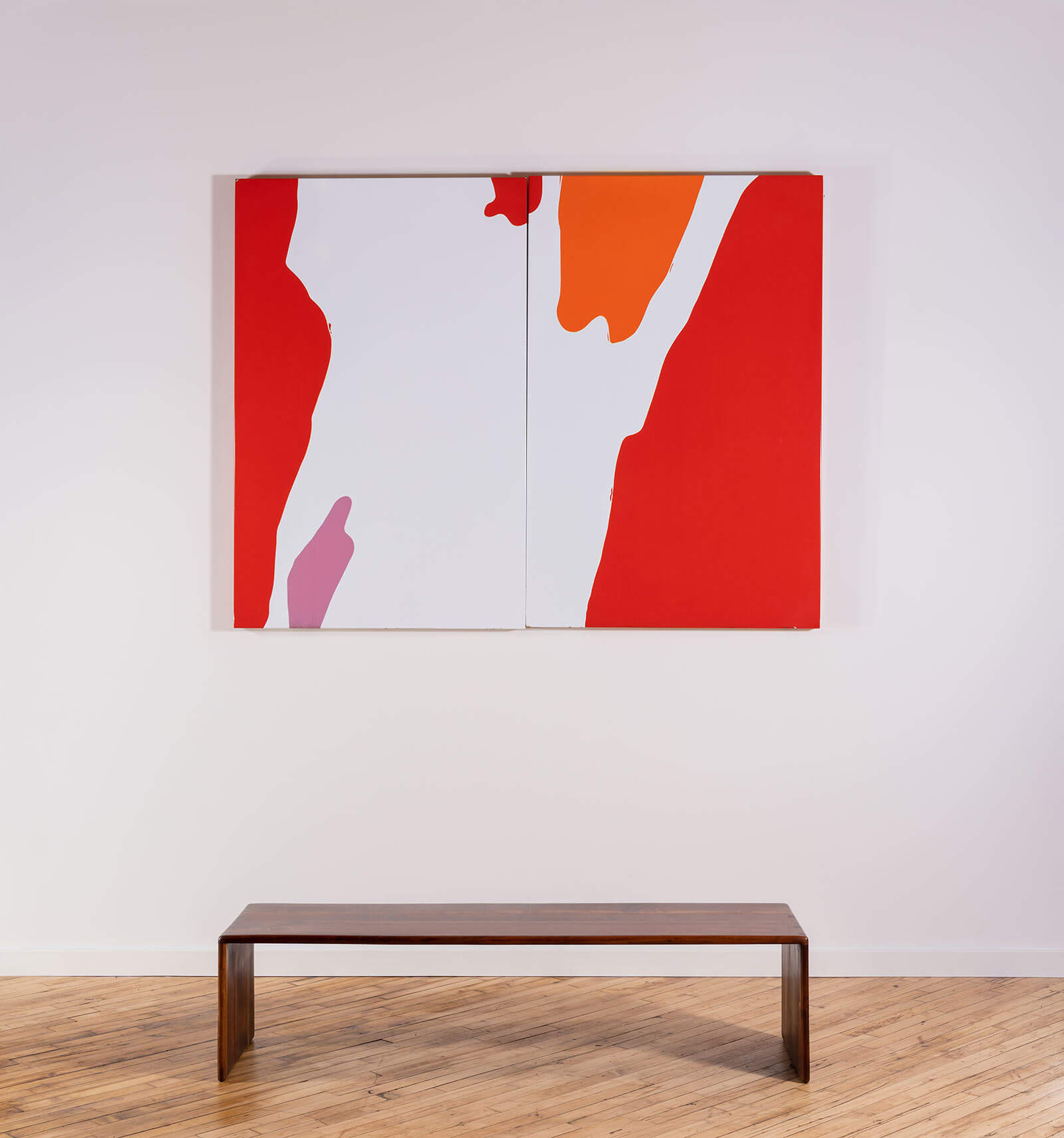
Paul Hultberg, ‘Dallas Diptych’, 1986
COURTESY: Moderne Gallery / PHOTOGRAPH: Christian Giannelli
“He was out there; he was important. And then, because he kind of retired, he disappeared. It’s not uncommon,” says Robert Aibel, founder of the Moderne Gallery, who rescued George Nakashima from obscurity in the late 80s. But Adamson puts it down to Hultberg’s preference for enamel. “For all his intelligent engagement with contemporaneous painting,” he writes in the exhibition’s catalogue, “his chosen discipline seemed to occupy a space apart”.
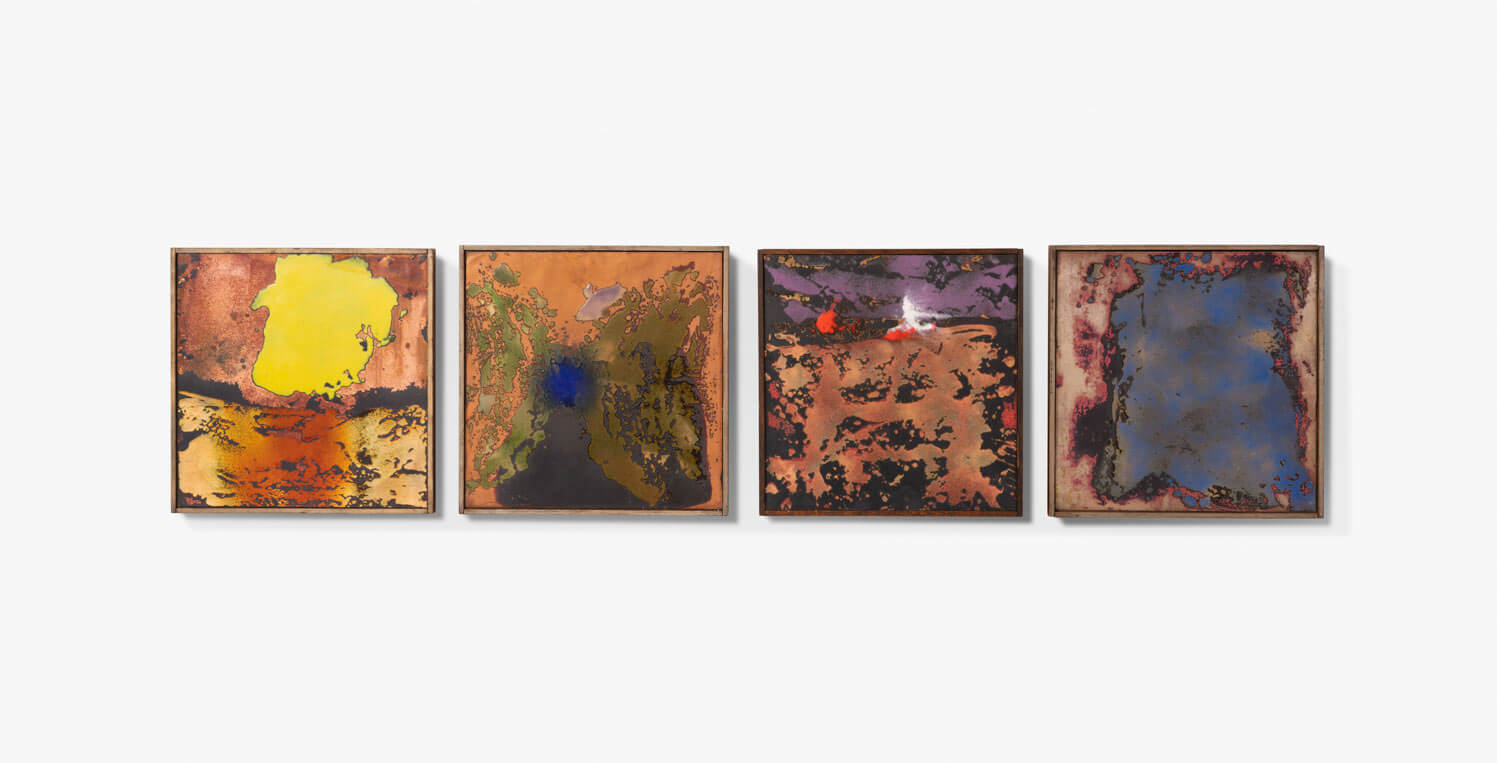
Paul Hultberg, ‘Untitled 6’, circa 1960s
COURTESY: Moderne Gallery
Hultberg, however, could not have achieved what he wanted to with paint. “I intend it not to be a message,” he said of his work in 1966. “It doesn’t tell anybody anything.” Rather he was seeking a spontaneous and emotional response. Once out of the kiln and rolled flat, each panel needed to be something that “I want to see later, I get a certain feeling from, I want to be near. If it doesn’t do that, I throw it away.”
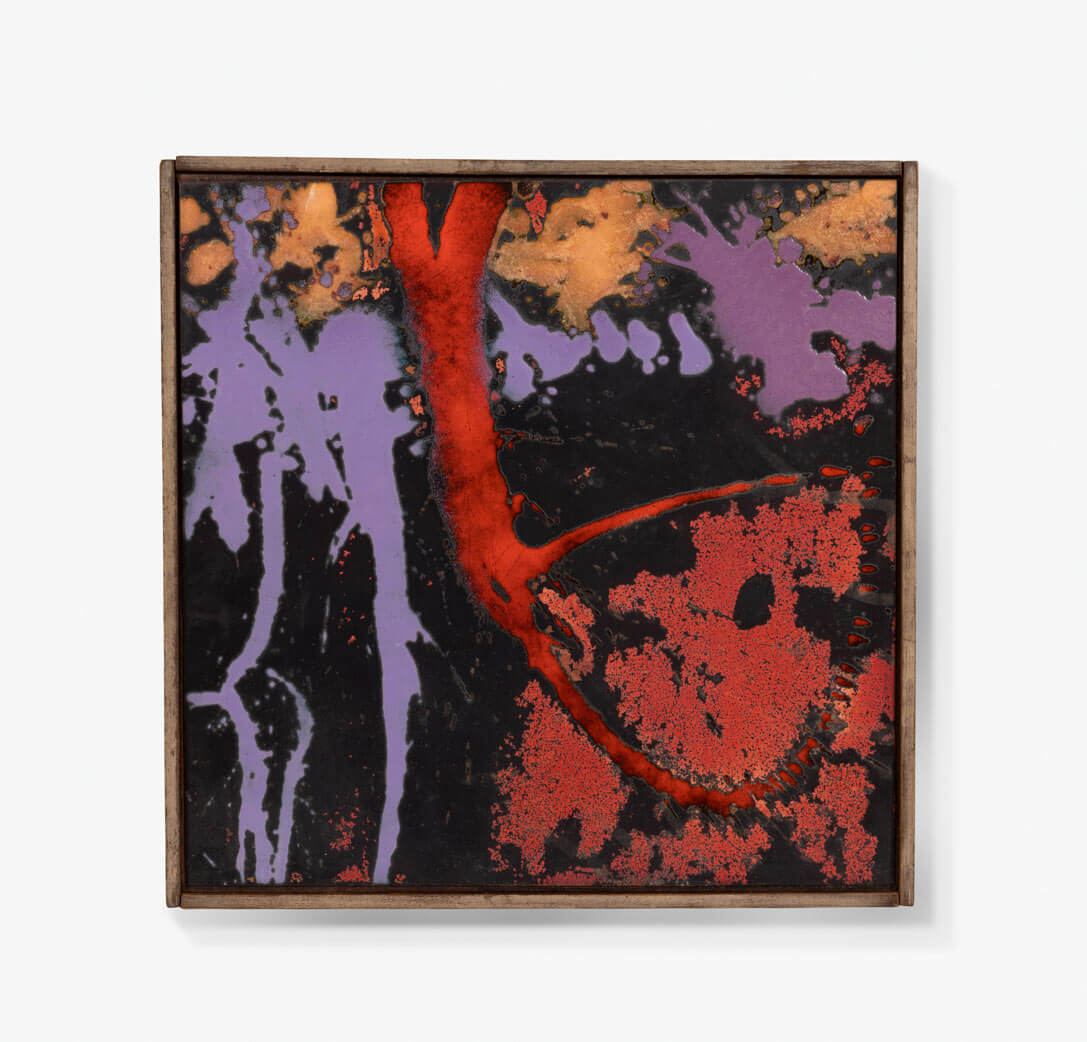
Paul Hultberg, ‘Abstract #6’, 1965
COURTESY: Moderne Gallery
Rediscovering Paul Hultberg: Abstract Expressionism in Enamel at the Moderne Gallery, Philadelphia.
